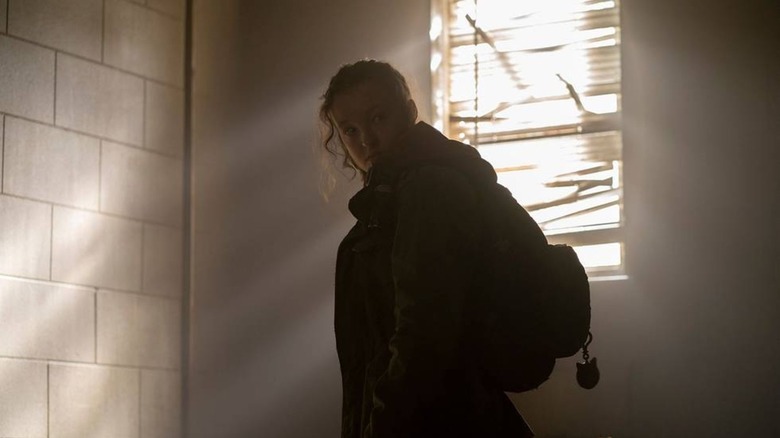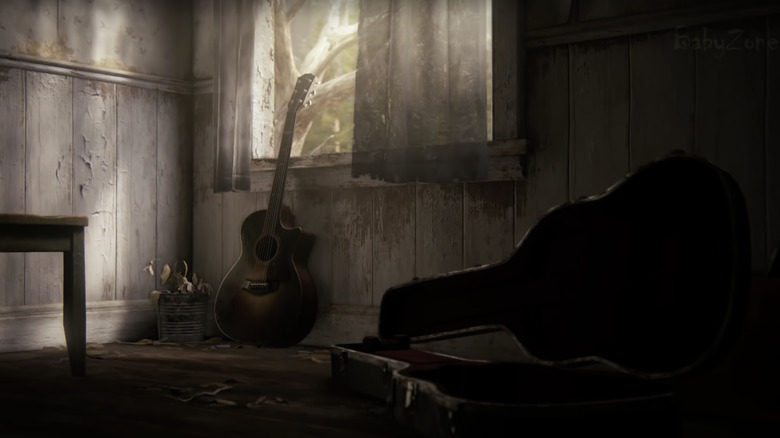The Last Of Us Team Made Sure Not To Overuse One Of The Game's Most Famous Motifs [Exclusive]
This post contains spoilers for the third episode of "The Last of Us" as well as the end of the first video game.
Episode 3 of HBO's "The Last of Us" might be the largest departure from the game's narrative so far, so much so that video game creator and series executive producer Neil Druckmann is expecting some fans to be "upset by it." While this episode, written by showrunner Craig Mazin, certainly deviates from the text, it does so with a genuine desire to strengthen the existing themes from the video game. In a cruel and violent world, is it better to open your heart to love like Bill and Frank? Or is it smarter to close yourself off like Joel?
Mazin has turned one of the original game's subtextual background relationships into perhaps the freshest gay romances we've seen on TV in quite some time. As cathartic as it is tragic, the episode also ends on a shot that any fan of the original game will recognize: Peering at Ellie and Joel driving away from the tranquility of Bill and Frank's open windowsill.
For those not in the know, this shot is a specific visual nod to the main title screen of the original "The Last of Us" game, which would become a recurring motif in the game franchise. /Film's Valerie Ettenhofer sat down with one of the series' cinematographers, Eben Bolter, and chatted about bringing the world of "The Last of Us" to life onscreen. Bolter shared that fighting the temptation to overuse the window motif was more of a challenge than one would expect.
"It's funny, once you've got something like that, like a motif of a window with a dusty curtain ... it's amazing how often you see it." Bolter explained.
A symbol of inner peace and tranquility
When a player finishes the story mode of "The Last of Us," the title screen subtly changes, and Ellie's signature pocket knife is now lying down on the sill — a symbol of her newfound safety. There's a whole, unknown world beyond the window covered in lush green, and Ellie seems to have put her guard down enough to lay her weapon to rest. Whenever one loads up the game, they're treated to a momentary symbol of peace right before reverting to the violent nature the gameplay demands. Handing the window shot to Bill and Frank similarly bookends their story with a cathartic amount of contentedness.
When there's a simple, meaningful image like that always in mind, it's easy to see how it could become easily overused. It's a great thing that Eben Bolter and company made an effort to not "overdo it," despite the temptation:
"We were definitely conscious to not overdo it, actually. I can remember several other times where it was like, 'Oh, as she walks away, if we hold ... it's the window shot.' And it would be like, 'Yeah, but it doesn't mean anything.' So we had to check ourselves quite a few times. But that did feel like a real time to do it. I'm glad it stayed in, because so often these things don't."
The window motif shows up one other time in the games, providing the final shot to Ellie's long quest to find inner peace in the wake of blind revenge in "The Last of Us Part II." If we are to see the window shot make its return again in this series, hopefully it will be associated with another character's moment of self-realization.

